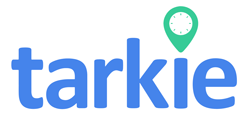As work changes, a big question arises: Can companies balance work, accountability, and happiness in a hybrid team? With 55% of workers wanting hybrid jobs, companies in the Philippines face a big challenge. They need to track time and manage attendance for both office and remote work.
The hybrid model brings flexibility and better work-life balance. But it also makes coordination and communication harder. Businesses must find the right tools to keep operations smooth, boost productivity, and keep employees happy.
Key Takeaways
- 60% of employees benefit from the flexibility offered by hybrid models.
- Time tracking systems lead to increased transparency and accountability.
- Effective communication can mitigate common challenges in hybrid settings.
- Proper attendance management directly correlates with enhanced productivity.
- Investing in technology can yield significant returns on productivity.
- Reports suggest 10-25% cost savings through efficient time management.
Understanding the Hybrid Workforce
The hybrid workforce idea has become very popular lately. It changes how companies set up work. This model mixes working from home and office work, making work more flexible.
By letting workers choose their work times and places, companies gain a lot. They see many benefits.
Definition and Overview of Hybrid Work Models
Hybrid work models come in different forms. They include flexible hours, set office days, and working from home. These options let workers have a work setup that fits them best.
Studies show that over 90% of mid-sized companies are moving to these models. They see how happy and engaged their workers become.
Benefits of Hybrid Work for Employers and Employees
Hybrid work is good for both employers and employees. Workers get to balance their personal and work lives better. This is very important to them.
After COVID-19, 64% of people said they might quit if they had to go back to the office full-time. Companies save money and work better too.
The Importance of Time Tracking in Hybrid Workforces
In today’s work world, time tracking is key for hybrid teams. Businesses with both in-office and remote workers need to boost productivity and keep everyone accountable. Using top-notch time tracking tools, like Tarkie, helps keep productivity high and builds a transparent work culture.
Enhancing Productivity through Accurate Time Tracking
Good time tracking boosts productivity. Companies with solid tracking systems save a lot of time on payroll. This lets them focus on growing and improving. Studies show using monitoring software can cut costs by 15%, showing how important time management is.
Creating Accountability and Transparency
Time tracking makes employees feel responsible, helping both bosses and workers. It shows who’s doing what, keeping teams on track. It also makes employees feel valued, boosting morale and keeping them around longer. With almost 79% of companies managing remote workers, having reliable tracking is key for accountability.
![]()
| Benefits of Time Tracking | Impact on Hybrid Workforces |
|---|---|
| Improved Productivity | Reduction in administrative tasks |
| Enhanced Employee Accountability | Increased morale and satisfaction |
| Streamlined Payroll Processing | More efficient payment systems |
| Greater Transparency | Clear expectations align management and staff |
Challenges in Attendance Management for Hybrid Work
Managing attendance in a hybrid work setup is tough. It’s mainly because of communication issues and coordination problems. When team members are not in the same place, they can feel left out. This makes teamwork and keeping everyone on the same page harder.
Communication Barriers and Coordination Issues
Good attendance management needs clear communication. Teams often struggle with:
- Constantly checking messages and emails, which cuts into work time.
- Getting distracted, losing up to 4 hours of work each day.
- It’s hard to keep track of who’s working when everyone is not in the same place, adding to communication barriers.
These problems can make team members frustrated and less coordinated.
Addressing Employee Trust and Engagement
Trust is key for good attendance management. Companies like Apple and Netflix learned this the hard way. They didn’t track hours well. To fix this, organizations should:
- Keep communication open to make employees feel important and involved.
- Use tech that shows how work is being done to boost morale.
- Find a balance between giving employees freedom and using time-tracking tools.
Strong employee engagement helps teams work better together, overcoming communication issues.
Effective Time Tracking Solutions for Hybrid Workforces
Effective time tracking tools are key for managing hybrid workforces. They help keep productivity high and ensure everyone is accountable. They also meet the needs of employees who work from home and the office.
There are two main types of time tracking tools: software and manual systems. Software tools, like mobile apps and biometric systems, offer many features. They can automatically log hours, track locations, and provide detailed insights.
Manual systems, like sign-in sheets, are less common but still used in some places. They can be less accurate than software tools.
Integrating Digital Timesheets for Seamless Tracking
Digital timesheets are very efficient and reliable for tracking work hours. They work well with other management tools to improve accuracy. Automated systems are great for field-based employees, as they can track productivity.
With more people working from home, using advanced tracking tools is important. It helps employers understand how employees work. This information is useful for payroll and task management.
| Feature | Software Solutions | Manual Systems |
|---|---|---|
| Accuracy | High – Automated tracking reduces errors | Low – Prone to human error |
| Flexibility | High – Supports remote and office work | Low – Usually fixed hours |
| Data Analysis | Comprehensive reports and analytics | Limited – Manual calculations |
| Technology Integration | Easily integrates with other software | No integration capabilities |

Best Practices for Attendance Management
Managing attendance in a hybrid workforce needs a proactive plan. It ensures work runs smoothly and keeps employees happy. Companies should follow best practices that include clear attendance rules. These rules help everyone know what’s expected.
Having strict attendance policies makes the workplace better. It makes team members take their responsibilities seriously.
Establishing a Clear Attendance Policy
It’s crucial to have a clear attendance policy. This policy shows how important being on time and present is. Companies should make rules that cover:
- What’s expected for in-office and remote work.
- How to tell the company when you can’t make it.
- What happens if you don’t follow the rules.
Clear rules help everyone understand their role. This leads to better work performance, as everyone knows they’re important.
Utilizing Workforce Productivity Tools
Using top-notch tools for managing the workforce makes tracking easier. These tools cut down on mistakes and problems. Here’s why they’re good:
- They can save up to 50% on costs.
- They help keep employees engaged, boosting productivity by 25%.
- They make payroll more accurate by 40%.
These tools help reduce no-shows and boost work quality. Better attendance management builds trust and motivation in the team.
Choosing the Right Employee Scheduling Software
Choosing the right employee scheduling software is key for managing hybrid teams well. The right tools can make your team more efficient and happier. Look for features and integration that help your workflow run smoothly.
Features to Look For in Scheduling Tools
It’s important to know what features to look for in employee scheduling software. Here are some key ones:
- Real-Time Availability: Tools that let team members update their availability help avoid scheduling problems.
- Mobile Access: Scheduling software that works on mobile devices lets employees manage their schedules anywhere.
- Customizable Reporting: Find tools that offer reports you can customize to fit your needs.
- Geo-Tracking Capabilities: This feature is crucial for teams that work remotely or are often on the move.
- Automated Reminders: Tools that send automatic reminders help employees stay on track and avoid missing shifts.
Integration Capabilities with Existing Systems
Integration is a big plus for employee scheduling software. Look at these points:
- Compatibility with Payroll Systems: Tools that work with payroll can cut down processing time and improve accuracy.
- Linking with Project Management Software: Integrating with project management tools can make your team more productive.
- Data Accessibility: Cloud-based solutions make it easier for teams to access data, boosting tracking efficiency by 25%.
- Analytics and Insights: Many systems offer data-driven insights to help make better staffing decisions.
| Feature | Importance | Impact on Operations |
|---|---|---|
| Real-Time Availability | Prevents scheduling conflicts | Improved employee satisfaction |
| Mobile Access | Enhances convenience | Increased engagement |
| Customizable Reporting | Meets diverse needs | Better compliance and oversight |
| Geo-Tracking Capabilities | Supports remote and field staff | Higher accuracy in attendance tracking |
| Automated Reminders | Reduces missed shifts | Boosts accountability |
Using the right employee scheduling software helps manage hybrid teams better. As this technology grows, knowing what features and integration to look for is key. It helps keep your team productive and operations smooth.
Utilizing Remote Work Solutions for Enhanced Collaboration
Today, working together from different places is key. Many tools help teams stay in touch and work well together, even when they’re not in the same room. These tools make it easy to connect and keep track of who’s there.
Platforms for Virtual Attendance Tracking
Tools like Zoom and Microsoft Teams have changed how we track who’s working. They let teams see who’s online and who’s not. This helps everyone know who’s available and makes sure everyone’s doing their part.
It also helps solve problems like 63% of employees facing because they didn’t feel connected. This is because they didn’t know who was working and who wasn’t.
Encouraging a Culture of Collaboration
To build a team that works well together, teams need to check in often and do fun activities. This helps everyone feel connected and happy at work. When people feel valued, they work better.
Companies that use these tools well see better results. They get more done, work better together, and everyone feels part of the team. Using tools to keep everyone connected can make a big difference.
Monitoring Performance in a Hybrid Environment
Monitoring employee performance is key in a hybrid work setting. It’s important to have clear performance metrics for both in-office and remote workers. This helps address any issues that come up with flexible work arrangements.
Setting Clear Performance Metrics
Creating measurable performance metrics is crucial. It lets organizations accurately see how employees contribute. Metrics can include:
- Task completion rates
- Quality of work delivered
- Time management efficiency
- Collaboration and teamwork assessment
Using these metrics helps avoid unfair biases. It ensures fairness across the workforce. It also motivates staff, leading to better attendance as they feel valued.
Utilizing Data to Adjust Strategies
Data analytics tools give insights for adjusting strategies. By looking at attendance trends, organizations can understand:
| Metric | Value |
|---|---|
| Most Popular Office Days | Monday and Tuesday |
| Average Days in Office | 2.5 Days per Week |
| Employee Satisfaction Rate | 72% |
| Overall Productivity Index | 8.1/10 |
Talking to employees about attendance issues can solve problems early. Clear attendance policies are vital to avoid confusion. Regular talks boost motivation and create a culture that values performance and strategy adjustments.

Case Studies: Successful Hybrid Workforce Management
Looking into how Philippine SMEs manage their hybrid workforces is enlightening. These examples show how companies handle remote and in-office work with new methods. They highlight strategies for better attendance, keeping employees engaged, and boosting productivity.
Examples from Philippine SMEs
Many SMEs in the Philippines use cloud systems for managing their workforces. This approach makes tracking attendance more accurate, cutting down on old methods. For example, customer service and healthcare sectors see better staffing thanks to automated tracking.
- Less error in attendance records.
- HR teams save time without manual tasks.
- Lower costs for keeping records.
- Improved safety with real-time monitoring.
Lessons Learned and Key Takeaways
These case studies show the value of technology in managing hybrid workforces. Key points are:
- Cloud systems can save money by reducing manual tracking costs.
- Features like geofencing and biometrics boost security and efficiency.
- Automated systems help meet labor laws by providing accurate data.
- By 2028, 73% of companies will use hybrid models, so staying tech-savvy is key.
Philippine SMEs show how to manage hybrid workforces well. They share strategies for better productivity and handling hybrid work challenges.
The Future of Hybrid Work and Time Tracking
The way we work is changing, with more people working in flexible settings. Hybrid work is becoming more common, thanks to new technology. This change is reshaping how companies manage their teams.
Emerging Trends in Hybrid Work Technology
Companies are investing in digital tools to manage their hybrid workforces. Deloitte found that 82% of businesses want better digital solutions for tracking time and attendance. They’re looking at things like biometric systems, automated tracking, and mobile apps.
These tools help keep workplaces safe and reduce fraud. For example, logistics companies saw a 15% drop in payroll fraud after using biometric systems.
Cloud-based platforms are also popular, making time tracking 45% more accurate. They also cut payroll processing time by 30%. The market for these cloud-based solutions is expected to hit $9.3 billion by 2025.
Preparing for Ongoing Changes in Work Environments
Employers need to stay ahead of changes in work environments. With 74% of HR leaders planning for more flexible work, it’s key to focus on job satisfaction and productivity. Flexible schedules are crucial, with 72% of employees saying it boosts their job satisfaction.
Adapting to these changes means embracing new tech like self-service scheduling and mobile clock-ins. AI in time tracking can also improve how we monitor performance and understand our teams. This helps companies stay competitive and address new challenges.

| Trend | Impact | Statistics |
|---|---|---|
| Cloud-based Systems | Improved accuracy and reduced payroll time | 45% accuracy improvement, 30% reduction in payroll processing |
| Biometric Attendance | Reduced payroll fraud | 15% reduction in fraud cases |
| Flexible Work Schedules | Increased job satisfaction | 72% of employees rate it as critical for satisfaction |
| Digital HR Tools | Enhanced time management and productivity | 82% of organizations are investing in these tools |
| AI Integration | Refined performance monitoring | Potential of increased efficiencies and absenteeism predictions |
Conclusion
Managing a hybrid workforce is complex, but time tracking and attendance management are key. By blending in-office and remote work, companies can boost employee engagement and productivity. In fact, using modern attendance solutions can save around $11 billion a year from time theft.
Creating a culture of trust and accountability is vital in hybrid work settings. Companies with flexible attendance policies see less absenteeism and happier employees. Studies show that working during peak hours leads to better performance and success.
In the Philippines, investing in advanced time tracking systems is crucial. Cloud-based platforms with payroll integration are a good start. Tools like biometric systems can help prevent buddy punching. For more on time tracking software, check out this guide. Adopting these strategies will help companies stay ahead in the changing work world.
